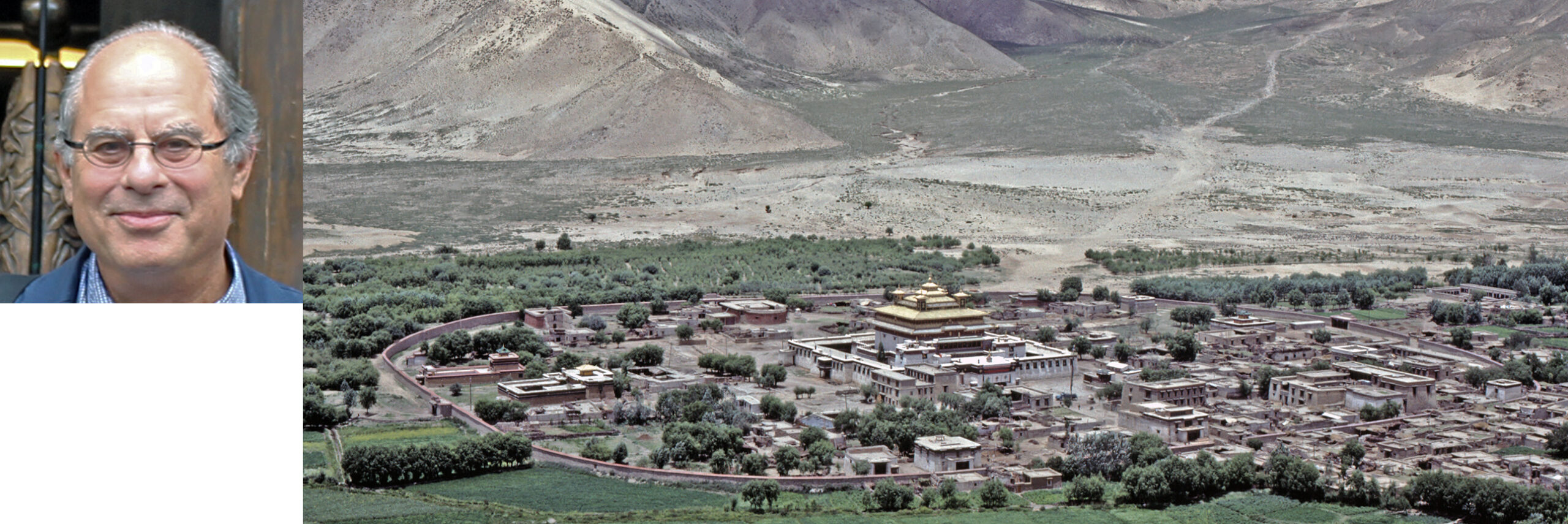
The Tibetan Empire: 7th- 9th century
A Lecture by Matthew Kapstein
Saturday, May 18, 2019
3:00 PM–4:30 PM
The Temple of the Turquoise Grove: A Monument of the Tibetan Empire
What can a fabled monument tell us about the intertwining histories of Tibet and China? From the 7th to the 9th century the Tibetan Empire first stepped onto the world stage. A threat to the Tang Empire (618″“917), Tibet’s military expansion pressured the Tang to conclude a series of treaties with Tibet, in the hope of stabilizing the frontiers between them. The last of these treaties, signed in 822, was marked by the founding of a famed temple, known in Tibetan as the Temple of the Turquoise Grove, whose whereabouts have remained a mystery. Dr. Kapstein underscores the early history of the Tibetan Empire in its relation to Tang China by examining the history and iconography of this enigmatic monument.
About the Series
Is Tibet a part of China, an independent nation, or something else? Questions about Tibet’s sovereignty and its relationship to China are hotly contested. To understand where Tibet-China relations are today, a long view is beneficial. Four lectures by leading scholars in the field seek to plot out the causal milestones in Sino-Tibetan relations from the 7th to the 20th century.
Once one of the most formidable military powers in Central Asia, Tibet later developed a singular association with the Mongol and then the Manchu rulers of the Chinese Empire. Tibetan Buddhism offered these rulers a divine means to power and legitimacy in return for a sometimes tacit, sometimes explicit interdependence. The series concludes by addressing how Western notions of nationhood and sovereignty disrupted the status quo between Tibet and China.
About the Speaker
Matthew T. Kapstein specializes in the history of Buddhist philosophy in India and Tibet, as well as in the cultural history of Tibetan Buddhism more generally. He regularly teaches Contemporary Theories in the Study of Religion in the History of Religions program, and Introduction to the Philosophies of India in Philosophy of Religions. His seminars in recent years have focused on particular topics in the history of Buddhist thought, such as Buddha Nature, idealism, and epistemology (pramÄṇa), or on broad themes in the study of religion including the problem of evil, death, and the imagination. Kapstein has published over a dozen books and numerous articles, among the most recent of which are a general introduction to Tibetan cultural history, The Tibetans (Oxford 2006), an edited volume on Sino-Tibetan religious relations, Buddhism Between Tibet and China (Boston 2009), and a translation of an eleventh-century philosophical allegory in the acclaimed Clay Sanskrit Series, The Rise of Wisdom Moon (New York 2009). With Kurtis Schaeffer (University of Virginia) and Gray Tuttle (Columbia), he has completed Sources of Tibetan Traditions, published in the Columbia University Press Sources of Asian Traditions series in 2013. Kapstein is emeritus professor of Tibetan Studies at the Ecole Pratique des Hautes Etudes, Paris, and Numata Visiting Professor of Buddhist Studies at the University of Chicago.
Image Credit
Photo by Matthew Kapstein
Standard Tickets: $20.00
Student Tickets: $14.00
Members Tickets: Free to All Members.

